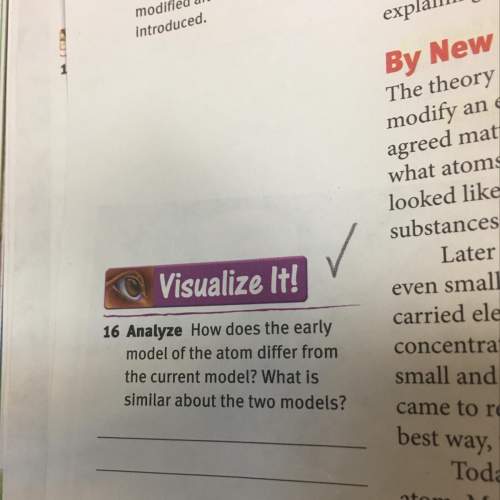
Chemistry, 23.07.2020 22:01 enriquerer12
A sample of gas (1.9 mol) is in a flask at 21 °C and 697 mmHg. The flask is opened and more gas is added to the flask. The new pressure is 795 mmHg and the temperature is now 26 °C. There are now mol of gas in the flask.

Answers: 1


Other questions on the subject: Chemistry

Chemistry, 22.06.2019 02:30, BornAdopted21
Which piece of equipment would me most useful for measuring the volume of some water? a. pan balance b. graduated cylinder c. tweezers d. flask quick
Answers: 2

Chemistry, 22.06.2019 04:00, soonerlady19
Which atom or ion is the largest? 0 a. 0 0 0 0 e. li
Answers: 2

Chemistry, 22.06.2019 04:50, shonnybenskin8
Compare the equilibrium constants for the systems shown in the table. which favors products the most? which favors products the least? rank these systems in order from most to least in terms of favoring products rather than reactants. d > b > a > c c > a > b > d b > c > d > a a > d > c > b
Answers: 1

Chemistry, 22.06.2019 09:00, kcarstensen59070
What type of energy do chemical bonds have? what type of energy is it converted to during chemical reactions? question 15 options: chemical bonds have kinetic energy, which is converted to potential energy during chemical reactions. chemical bonds have electric energy, which is converted to potential energy during chemical reactions. chemical bonds have heat energy, which is converted to kinetic energy during chemical reactions. chemical bonds have potential energy, which is converted to heat energy during chemical reactions.
Answers: 1
You know the right answer?
A sample of gas (1.9 mol) is in a flask at 21 °C and 697 mmHg. The flask is opened and more gas is a...
Questions in other subjects:

Spanish, 02.03.2020 05:06


English, 02.03.2020 05:06





Mathematics, 02.03.2020 05:06





